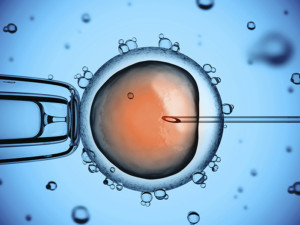In-vitro Fertilization
“The fidelity of the spouses in the unity of marriage involves reciprocal respect of their right to become a father and a mother only through each other. The child has the right to be conceived, carried in the womb, brought into the world and brought up within marriage: it is through the secure and recognized relationship to his own parents that the child can discover his own identity and achieve his own proper human development.”
—Congregation for the Doctrine of the Faith, Donum Vitae – The Gift of Life, 1987
ccording to the National Fertility Association, over 7 million people in the United States struggle with issues of infertility. A couple who finds out that they are unable to conceive a child may fall into depression or suffer from other health and marital problems. In light of these serious factors, it is not surprising that many of these couples turn to assisted reproductive technologies (ART’s) in order to overcome health problems and be able to conceive children of their own. If the Catholic Church believes that the creation of human beings is good, then why would the Church oppose something ART’s like in-vitro-fertilization?

Even if IVF could be practiced in a way where embryos were not destroyed, it would still separate the unitive and procreative aspects of human sexuality.
First, the Church does not oppose all assisted reproductive technologies. In fact, organizations like the Pope Paul VI institute have been researching for years into medical practices and treatments that treat the root causes of infertility without violating the sanctity of the marital act. One example of this is the use of NaPro reproductive technologies and even the skillful use of NFP to conceive children during a woman’s fertile period. Second, the reason that the Church opposes in-vitro fertilization is that it is dangerous for the child and treats the child and couple as if they were part of manufacturing process, and not a family.
In most IVF cases, multiple embryos are created in a laboratory (from genetic materials that may have been obtained through illicit means like masturbation) and then only some are implanted in a woman’s womb. Through pre-implantation genetic diagnose, embryos with genetic abnormalities (even Down Syndrome) can be screened and then destroyed along with other unwanted embryos. However, not even all the embryos that are implanted survive because the extra implanted embryos are often aborted (which is referred to euphemistically as “selective reduction”). Some doctors even offer to abort these extra embryos because of their gender. Finally, even if IVF could be practiced in a way where embryos were not destroyed, it would still separate the unitive and procreative aspects of human sexuality. Children would not be the product of the free and total gift of a husband and wife, but instead be the manufactured result of a laboratory process involving dozens of strangers.
Q: Does the Church permit adopting frozen embryos, or as they’re sometimes called, “snowflake babies?”
A: The question of adopting snowflake babies is a morally complex one for Catholics. On the one hand, it is a laudable goal to provide a safe haven in the womb for frozen human embryos that would most likely be destroyed. On the other hand, approving the adoption of these embryos may encourage the continued use of IVF and treat these children as commodities, and not persons. The Vatican’s most recent statement on the issue was in the 2008 document Dignitais Personae. In this document, the Church praised the intentions of those who seek to adopt frozen embryos in order to benefit the children themselves, and not use them as a means to “have children.” However, the magisterium also realized that this solution was not a morally acceptable one to the problem of frozen, orphaned embryos. The document says,
“The proposal that these embryos could be put at the disposal of infertile couples as a treatment for infertility is not ethically acceptable for the same reasons which make artificial heterologous procreation illicit as well as any form of surrogate motherhood; this practice would also lead to other problems of a medical, psychological and legal nature.” (19)
Fr. Tad Pacholsyk of the National Catholic Bioethics Center, uses this illustration to show that embryo adoption leads to disorder and can have negative consequences. Pacholsyk asked a male friend who was a father of five, “how would you feel if [your wife] was implanted with someone else’s embryo” And he paused, and said, well, she should get pregnant only through me,” Pacholsyk went on to say,“[IVF companies would] have to replenish the stockpile. So this becomes a self-defeating proposal practically speaking as well. As tragic as these half a million frozen human beings are, we can’t go there. We’ve backed ourselves into a corner.”
Q: What reproductive technologies can a Catholic licitly use?
A: Reproductive technologies that do not violate or replace the marital act are licit for Catholics to use. For example, fertility drugs that stimulate ovum or sperm production, or surgical procedures that repair damaged organs are valid medical procedures designed to treat illnesses and restore the proper functioning of the body. Furthermore, placing the elements of sexual reproduction (the husband’s sperm and his wife’s ovum) in the wife’s body so that conception may occur in the proper place is also valid (provided the genetic material was not obtained illicitly – such as through masturbation). One process that uses this technique is known as gamete intrafallopian transfer, or GIFT. For more information about other alternatives to IVF, visit www.naprotechnology.com.
You formed my inmost being; you knit me in my mother’s womb. I praise you, so wonderfully you made me; wonderful are your works!”
—Psalm 139:13-14
